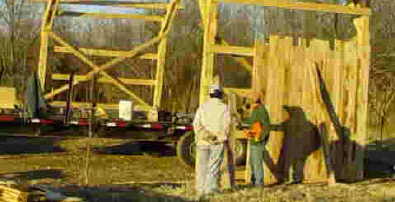Pros and Cons of Radio-Frequency Vacuum Drying
RF vacuum drying tends to be complicated, expensive, dangerous, and unreliable. February 15, 2015
Question (WOODWEB Member) :
We are Tropical Hardwood Decking producers located in Bolivia and are looking into the RF Vacuum technology. Because of the high prices of this dryers in Europe we have contacted some Chinese manufacturers. Does anybody have experience with Chinese dryers using this technology? Also any comment regarding this RF Vacuum dryers would be appreciated. Is it really much faster?
Forum Responses
(Sawing and Drying Forum)
From Gene Wengert, forum technical advisor:
Save your money. This dryer is very expensive to run and maintain. Also, many tropical hardwoods cannot be easily dried in a vacuum due to tyloses. Final MC’s were all over the map. Are residual drying stresses important?
From the original questioner:
We are considering this technology because electricity in Bolivia is not expensive and the Chinese machines seem good and are at a fraction of the price asked by European manufacturers. Both European and Chinese said we could dry tropical hardwood in six days with almost no defects. Do you think this is possible? Do you know anybody using this kind of technology?
From Contributor O:
It was a long time ago but I used to run eight 5000 bf RF/V kilns. They were very expensive to maintain and operate. The Chinese have no doubt made improvements but, as Gene mentions, they don't heat the wood evenly. Moisture content varied greatly in the kilns I ran. I'm not trying to sell a kiln in Bolivia but click on my website and see vacuum kilns that are simple, economical, reliable and very fast.
From Contributor R:
I run 8 RFV Kilns that we use primarily for drying Douglas fir. We tend to stay away from hardwoods as we have seen firsthand the effects of tylose. We have found that creating the correct drying schedules determines how effective we are drying the wood. We have been able to dry other species, but for one or two charges it wasn't a good solution for the customer (or our bottom line). Operational and maintenance costs are very expensive for these machines versus a conventional kiln. Since the only source of energy for the kiln is electricity, you had better have stock in your local electrical company.
I wouldn't trust any equipment coming from China, even more so with this application. With RF you are dealing with some very lethal equipment, and without an electrical engineer by your side I wouldn't even attempt to turn that equipment on. For the speed of drying, there are many factors that effect this. Given how cheap and large conventional kilns can be for a commercial operation, I would say the volume of wood produced would be far greater than what a RFV kiln could produce. Drying time for one of my charges ranges from five to seven days, and my charges are around 8k bf in volume.
From the original questioner:
Thank you very much for your response. We are looking into this technology because the electricity cost here in Bolivia is really cheap compared to other countries. You make a very good point about it being a dangerous technology and the Chinese quality issues. Do you think this RFV dryers are not suited for hardwood at all? Our wood density is around 900Kgrs/m3. Do you have any advice on a reliable industry for this kind of technology? Basically we are looking for a faster-than -traditional way to dry our wood to be able to decrease inventory.
